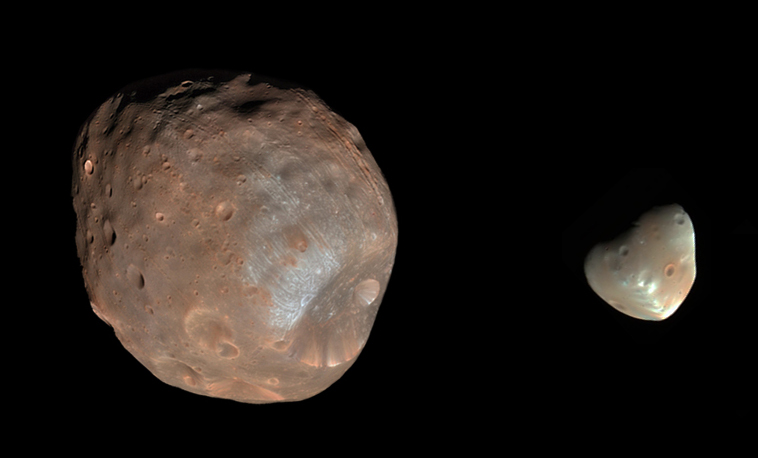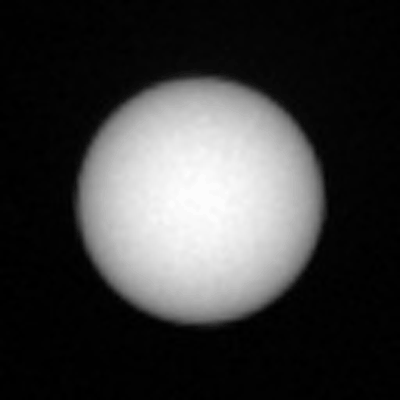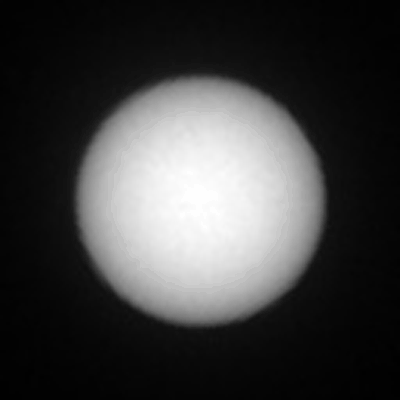
7th April 2019 Mars rover captures two solar eclipses NASA has released animated images of solar eclipses by the two moons of Mars, Phobos and Deimos, as viewed by the Curiosity rover.
NASA's Mars Science Laboratory, also known as Curiosity, has been on the Red Planet since August 2012. The various instruments it brought along included a Mast Camera (Mastcam) with solar filters, allowing it to stare directly at the Sun. Last month it captured partial eclipses by Phobos and Deimos, which can be seen in the GIF animations below. Compared to Earth's moon, Phobos and Deimos are very small. Phobos is the larger of the two, with dimensions of 27 × 22 × 18 km, but retains too little mass to be rounded under its own gravity. Deimos is 15 × 12 × 11 km and is likewise of irregular form. Despite their relatively tiny size, both moons orbit in close proximity to Mars, with semi-major axes of 9,377 km (Phobos) and 23,460 km (Deimos), enabling them to block a significant portion of the Sun. Deimos was imaged on 17th March, while Phobos was imaged on 26th March. If you prefer to see faster animations, the original GIFs can be viewed on the NASA website, sped up by a factor of 10. We have corrected them below, to show real-time movement. The actual duration of the Phobos eclipse is therefore around 35 seconds, while the Deimos eclipse (or more accurately, transit, due to its small size) is just over two minutes:
Phobos
Deimos
Comments »
If you enjoyed this article, please consider sharing it:
|









